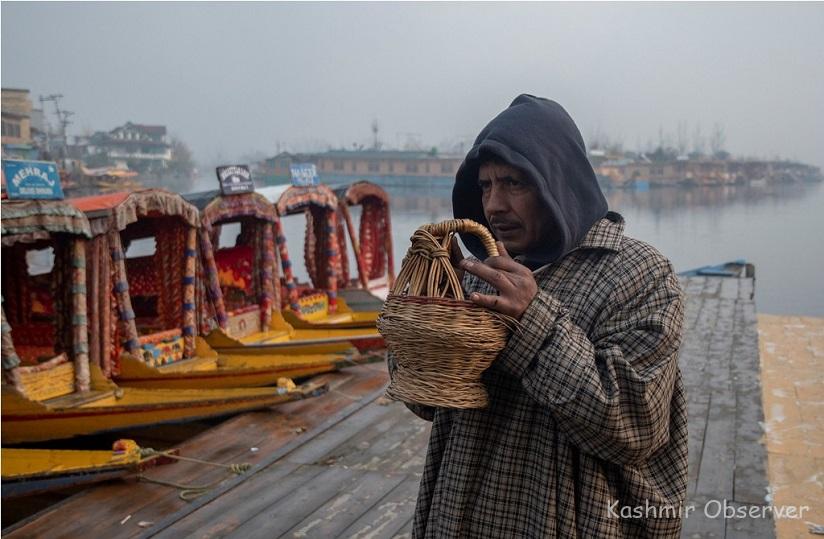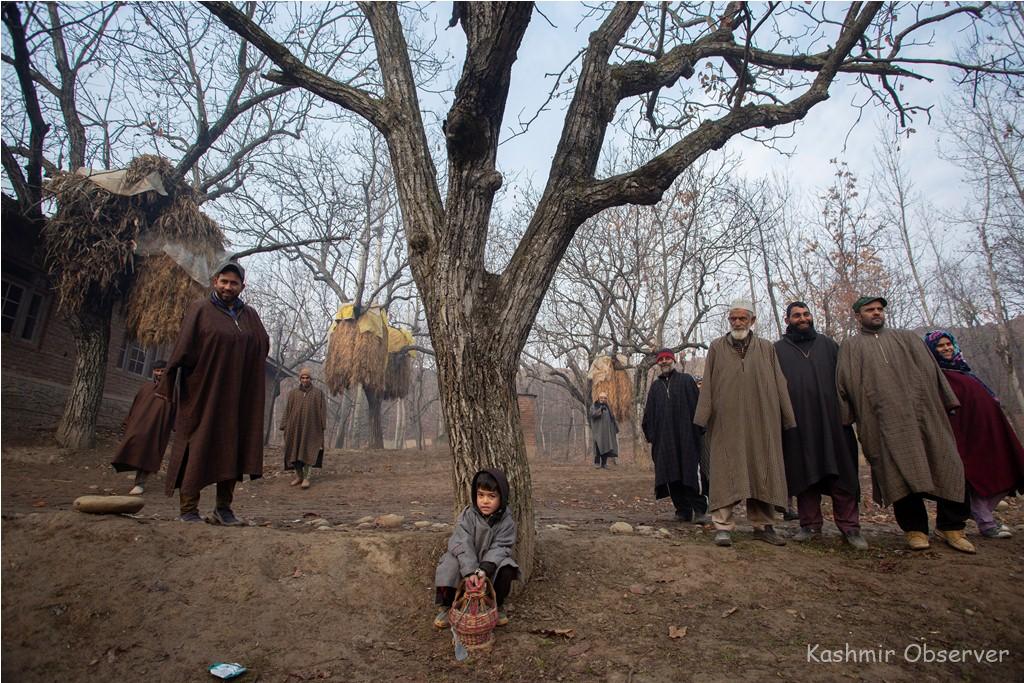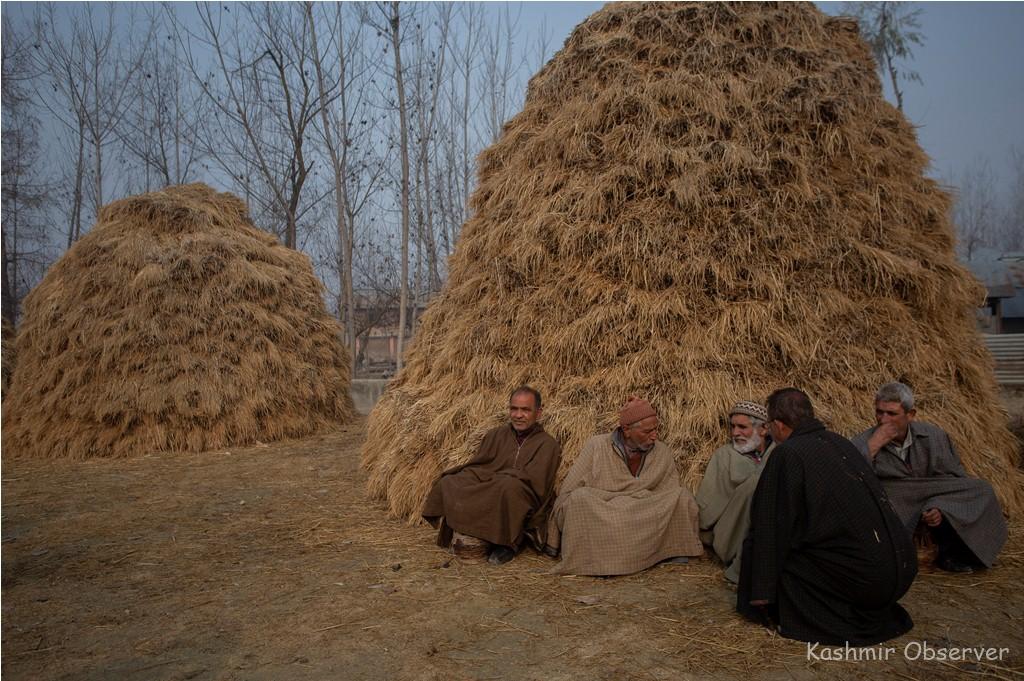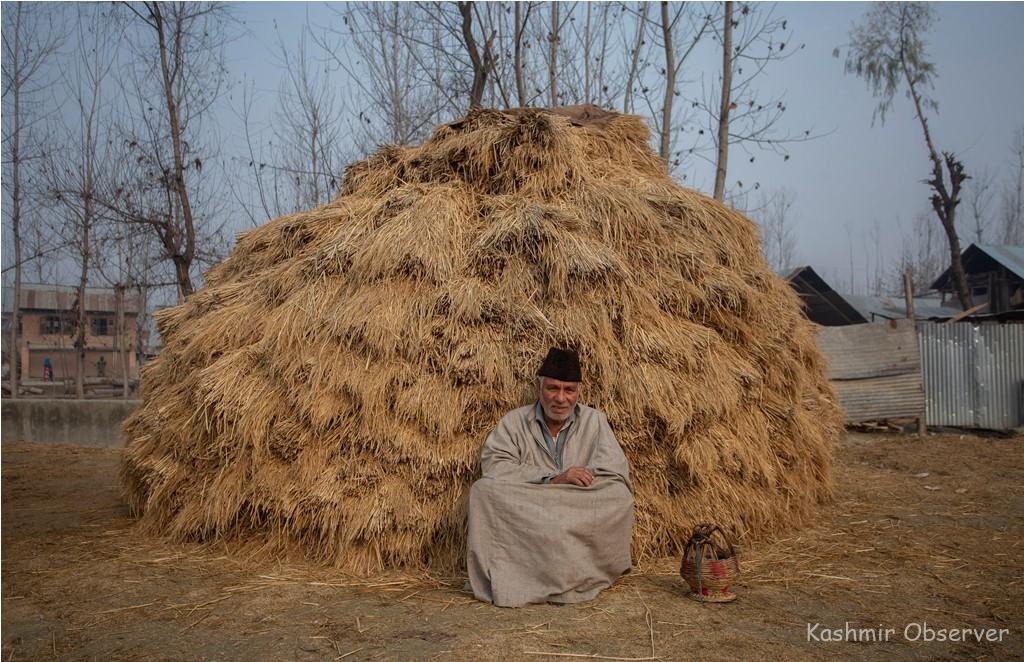
What do people in mainland know about a pheran? Is it to them what Preity Zinta wore in ‘Mission Kashmir’ while dancing on ‘Bhumbro Bhumbro?’ Or what the complex character of Shahid Kapoor wore in ‘Haider’?
Text by Aliza Noor
Photos by Abid Bhat
AS rumours ran rampant over the possible pheran proscription recently, many Kashmiris flooded the virtual world with fiery texts and pleasant pictures of their traditional gown.
The defiant act, many argued, showed how intrinsic the winter wear is to the lives of Kashmiris.
But the anger over the growing politicisation of pheran only peaked when photos showed locals in Kashmir being stopped by paramilitary forces—and told to remove their pherans, as part of a fresh and flash security strategy stemming from the recent rattling strike in the heartland.
Pheran is a long woollen garment or cloak which is mostly used in harsh winters to protect oneself from freezing cold. Worn by both Kashmiri Muslims and Kashmiri Pandits, it is one of the most common identity markers of a Kashmiri.
Before the locals would feel humiliated in a broad day light in the city centre, pheran had become news when rightwing Bajrang Dal called for a ban on the traditional attire. Reportedly, some figures in the ruling party have thrown their weight behind the call.
The demand came after two policemen were shot at point blank range by a militant at Barzulla locality of Srinagar. The militant had concealed the gun under his pheran.

More Than a Piece of Cloth
But as the fringe outfit is fishing in the troubled waters of the valley with its pheran polemics, author and scribe Gowhar Geelani dubs the ‘war cry’ as a blatant belligerence.
“The call for ban on pheran by far-right Hindu extremist groups is aimed at cultural aggression and to serve rounds of insult to Kashmiris,” Geelani said.
It has nothing to do with any security-related incident, he added. “Even Prime Minister Narendra Modi wore pheran when he visited Kashmir. So, to score a political point it is okay for politicians to use pheran as a symbol, but a common Kashmiri is deprived from his/her right to respect culture and preserve tradition and identity.”
This is also what most of the Kashmiris feel, that while most of them continue to fight for their basic rights, they are being watched, lectured and gaslit over their choice of clothing.

A Kashmiri pandit and a graduate in media and cultural studies, Vishruti Saraf said, “I honestly feel that an outfit being given this colour, of security, makes no sense. There are anyway only a few things left that keep me connected to my Kashmiri roots. Even as a child, whenever I saw my mother or other family members wear this piece of garment it always invoked an innate sense of Kashmiriyat in me.”
Strangely enough, Javid Qureshi, a self-proclaimed BJP sympathiser from north Kashmir’s Kupwara, recently protested against the call and held a demonstration on his hometown streets.
Any form of ban in a democratic country, said Dhruv Sumbli, should be reserved as a last resort only, after all other available measures have been exhausted by the government.
“In this instance where politically motivated groups have called for a ban on pheran, the government must look for other alternative preventive measures to ensure peace and tranquillity in the Valley,” Sumbli, a Kashmiri Pandit and lawyer, said.
“Banning of pheran would be a highly unpopular and inappropriate act to do and would set a very dangerous precedent for the rest of the country.”

Strange ‘Security’ Claim
It isn’t just in the Valley, but also the areas around it, like in Jammu where locals are not just fond of pherans but have worn it since years too.
A local journalist from Chenab region of Jammu, Anzer Ayoob said that Jammuites wear it too to protect themselves from cold.
“As Bajrang Dal recently said, ‘Militants wear Pheran, so ban it’ but I want to say that militants wear many things, it doesn’t mean we will ban everything,” said Ayoob.
He added that Kashmir where the winter cold is intolerable, a pheran is essential for the aged and the banning it under security reasons is just a pretence, like it was done for banning 4G.
Similarly, Firoz Bhat, a freelance journalist, also noted that majority in India need to understand that pheran is not just a mere piece of clothing for Kashmiris.
“The ban call is in fact obnoxious, to say the least,” Firoz said. “Militants have been wearing Pherans since the 90’s. Why ban now? Ever since August 5, 2019, the Indian state is just finding ways to mass harass the entire Kashmir region from every corner. There must be some other ways of dealing with the situation but definitely not this.”
Munawar Khan, a host of Talk Show, ‘Taarukk’, termed the ban call just a political stunt.
“It’s nothing to do with the security as well,” Khan said. “You cannot ask somebody in Rajasthan or Northeast to remove or not wear a certain kind of attire that’s a part of their culture.”

A Politicised Tool
Uproar around pheran erupted last time in 2018. Social media was abuzz when the Jammu and Kashmir school education department had allegedly banned people from wearing the traditional outfit in its zonal offices. The order did not explicitly mention pheran, but since Kashmir’s winter gown is considered a casual dress, and the order called for a “proper attire” making the insinuation clear. The order was withdrawn thereafter.
And now, again, the attention amplified by the sensationalist media is being diverted to the attire following the Srinagar shootout.
“The Indian mainstream media have been associating pheran to show characters associated with militants, gunmen or a criminal, but its more than that,” said scribe Mustafa Amin. “For us it’s about identity.”
Adding to this, Majid Hyderi, a local journalist said, “Ban on Pheran is abuse of Kashmir culture.” Robes, he asserted, cannot determine an act of aggression.

Bollywood and Pheran
Amid this renewed debate driven by rumours and reports, not much has been said and written about the depiction of pherans in Bollywood.
In some films like Haider and Bajrangi Bhaijaan, the pherans were a lot closer to those winter gowns worn in real life in Kashmir. However, many believe that Bollywood over the years has only glamourised the attire to suit their narratives.
“Bollywood’s portrayal of Kashmir is mostly from a colonial prism,” Geelani continued.
“Propaganda films depict Kashmiri as an unlettered Shikarawalla or a gun-wielding militant. And someone waiting for benevolence of an Indian tourist to change his/her destiny. This prism is problematic on multiple counts. Barring a couple of films like Haider and an odd web series, Bollywood is used as a tool to humiliate and insult Kashmiri women and men by showing them as uneducated, poor, and human beings without an agency to decide for themselves.”

Majid seconds Geelani’s take on the ‘bizarre Bollywoodisation’ of Kashmir and Kashmiris.
“Bollywood,” he noted, “has restricted the image of Kashmiri to two pigeon holes. One of vintage era, where he is projected as ultra-humble and servant-like host who wears a pheran and skullcap only to appease guests. Or, second one, which is that of a militant carrying a gun. Much like elsewhere Kashmir has been evolving and thus needs to be projected beyond this.”
However, Sumbli feels that despite pheran being a regional outfit, Bollywood has played a vital role in its popularization.
“Today, many Indians recognise the outfit and others wear it too, deriving their inspiration from actors like Preity Zinta in Mission Kashmir or Salman Khan in Bajrangi Bhaijaan,” he said.

Some Kashmiris, like Faiz feel that Bollywood has done less to show the pheran of the commons.
“I can only imagine a fair-skinned woman with silver jewellery on her head dancing to ‘Bhumbro Bhumbro’ or exquisite pherans with Tilla or Zari work on them. Not everyone in Kashmir wears them or can afford them. Bollywood has failed to show the pheran of the commons, Pattyu pheran, which is largely worn by the middle and working class,” he said.
There is still a matter up for debate and that is the origin of pheran.
While some believe it was Mughal emperor, Akbar who introduced it in the Valley, others say it was the Persians who did.
Munawar believes it was neither of the two.
“There is a Persian touch,” he said.
“But if you go to Leh, Ladakh and Northeast, they also wear similar long gowns. They have their distinctive styles, but our pherans have nothing to do with Akbar. It’s only the tilla work that has Persian aesthetics.”

In the growing virtual debates, people argue the way one sees a particular attire in a film—consciously or subconsciously—shapes minds and notions about a particular culture. In case of Kashmir, they say, the culture and traditions have always been used as tokenism in politics and media.
The call of ban thus, many say, seems like an attack on the culture and the support from the rightwing has only stoked fears of the embargo being institutionalised.
“With these repeated attempts, the only motive is to deny Kashmiris their agency and humiliate them by insulting their traditions,” Geelani said.
“And also part of the larger design and motive to disempower Kashmiris through cultural aggression.”
- Aliza Noor is freelance journalist from Lucknow, Uttar Pradesh. She worked with The Quint previously, and is mostly found indulging in books, news and cat videos.
Names of some journalists have been changed in this story to protect their identity.
Follow this link to join our WhatsApp group: Join Now
Be Part of Quality Journalism |
Quality journalism takes a lot of time, money and hard work to produce and despite all the hardships we still do it. Our reporters and editors are working overtime in Kashmir and beyond to cover what you care about, break big stories, and expose injustices that can change lives. Today more people are reading Kashmir Observer than ever, but only a handful are paying while advertising revenues are falling fast. |
| ACT NOW |
| MONTHLY | Rs 100 | |
| YEARLY | Rs 1000 | |
| LIFETIME | Rs 10000 | |










